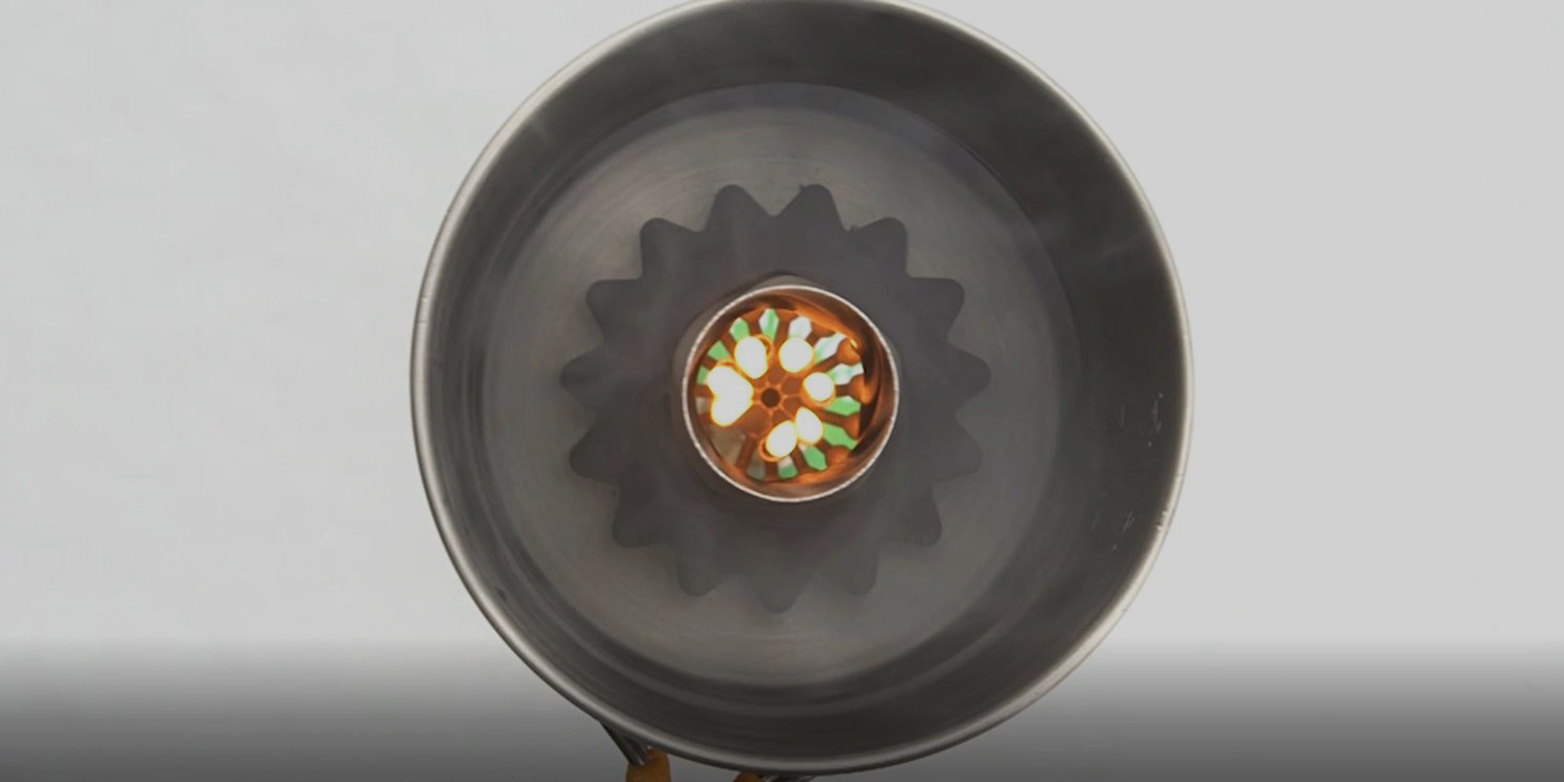I love camping, but there’s always an awkward period when you’ve left the tent but haven’t yet created coffee that I hate camping. It’s hard not to watch the pot not boil and not want to just go back to bed, but since the warm air escaped when I opened the tent it’s pointless! Anyway, the Swiss figured out a great way to boil water faster, and I want one of these sweet stoves now.
The PeakBoil stove comes from design students at ETH Zurich, who have clearly faced the same problems as myself. But since they actually camp in inclement weather, they also have to deal with wind blowing out the feeble flame of an ordinary gas burner.
Their attempt to improve on the design takes the controversial step of essentially installing a stovepipe inside the vessel and heating it from the inside out rather than from the bottom up. This has been used in lots of other situations to heat water but it’s the first time I’ve seen it in a camp stove.
 By carefully configuring the gas nozzles and adding ripples to the wall of the heat pipe, PeakBoil “increases the contact area between the flame and the jug,” explained doctoral student and project leader Julian Ferchow in an ETH Zurich news release.
By carefully configuring the gas nozzles and adding ripples to the wall of the heat pipe, PeakBoil “increases the contact area between the flame and the jug,” explained doctoral student and project leader Julian Ferchow in an ETH Zurich news release.
“That, plus the fact that the wall is very thin, makes heat transfer to the contents of the jug ideal,” added his colleague Patrick Beutler.
Keeping the flames isolated inside the chimney behind baffles minimizes wind interference with the flames, and prevents you having to burn extra gas to keep it alive.
The design was created using a selective laser melting or sintering process, in which metal powder is melted in a pattern much like a 3D printer lays down heated plastic. It’s really just another form of additive manufacturing, and it gave the students “a huge amount of design freedom…with metal casting, for instance, we could never achieve channels that are as thin as the ones inside our gas burner,” Ferchow said.
Of course the design means it’s pretty much only usable for boiling water (you wouldn’t want to balance a pan on top of it), but that’s such a common and specific use case that many campers already have a stove dedicated to the purpose.
The team is looking to further improve the design and also find an industry partner to take it to market with. MSR, GSI, REI… I’m looking at you. Together we can make my mornings bearable.